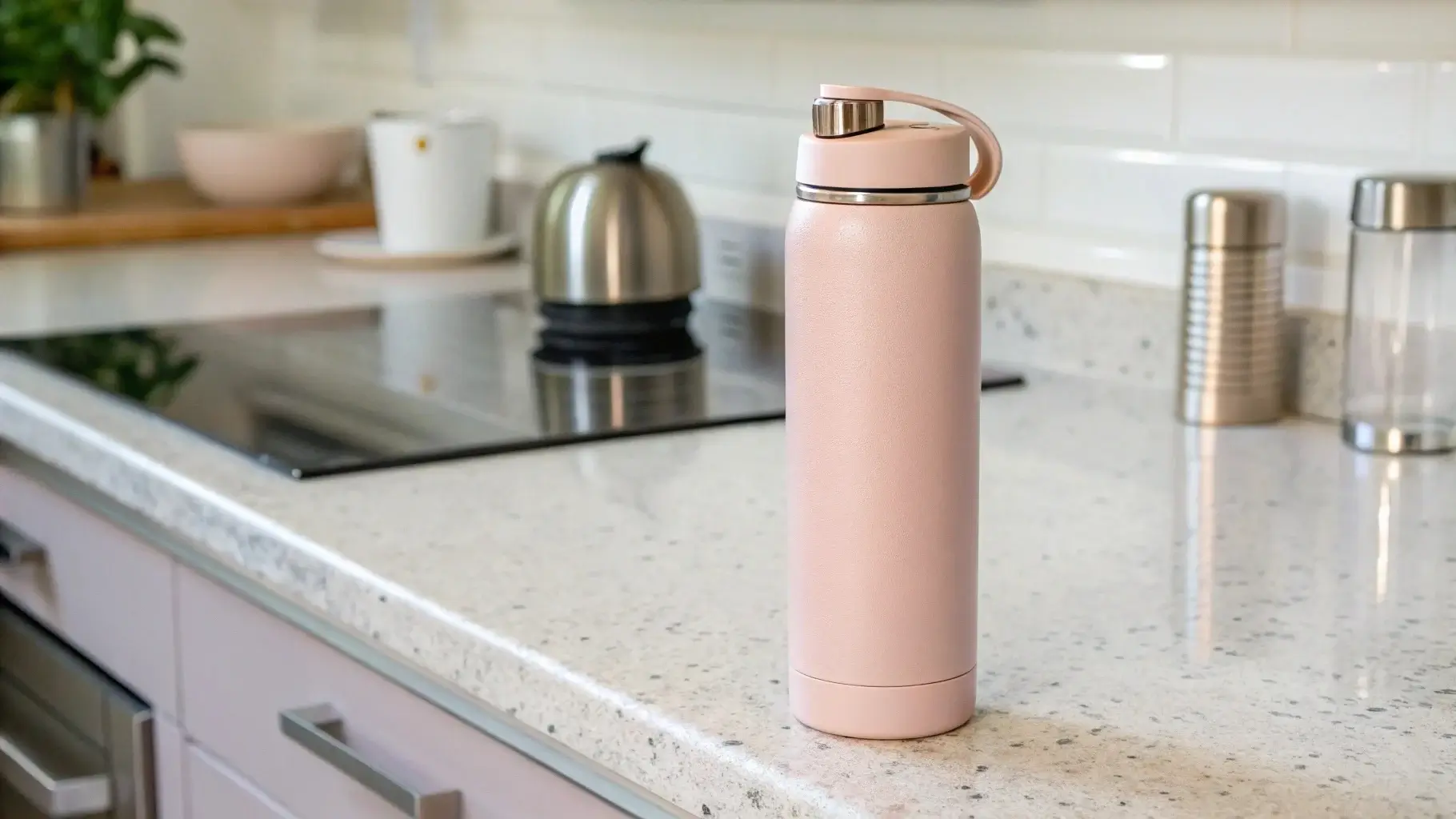
Stainless steel water bottles are often praised for their durability and ability to maintain the temperature of your drinks. However, if your bottle starts to have a metallic smell or taste, it can be frustrating. Understanding why this happens and how to fix it will ensure your water bottle stays fresh and clean. In this article, we'll explore various ways to remove the metallic smell and taste from your stainless steel bottle.
A metallic smell or taste in stainless steel water bottles can result from residues, improper cleaning, or prolonged exposure to certain substances. Simple cleaning techniques can solve this issue.
Now, let’s dive deeper into why this happens and how you can easily resolve it.
How to Remove Metallic Smell from Stainless Steel?
If your stainless steel bottle smells like metal, it's often due to lingering residues or contaminants left behind after use. The good news is that this smell can usually be eliminated with a few simple steps.
To remove metallic smells, clean the bottle thoroughly using natural cleaning agents like baking soda or vinegar. Rinse it well afterward to remove any lingering scents.
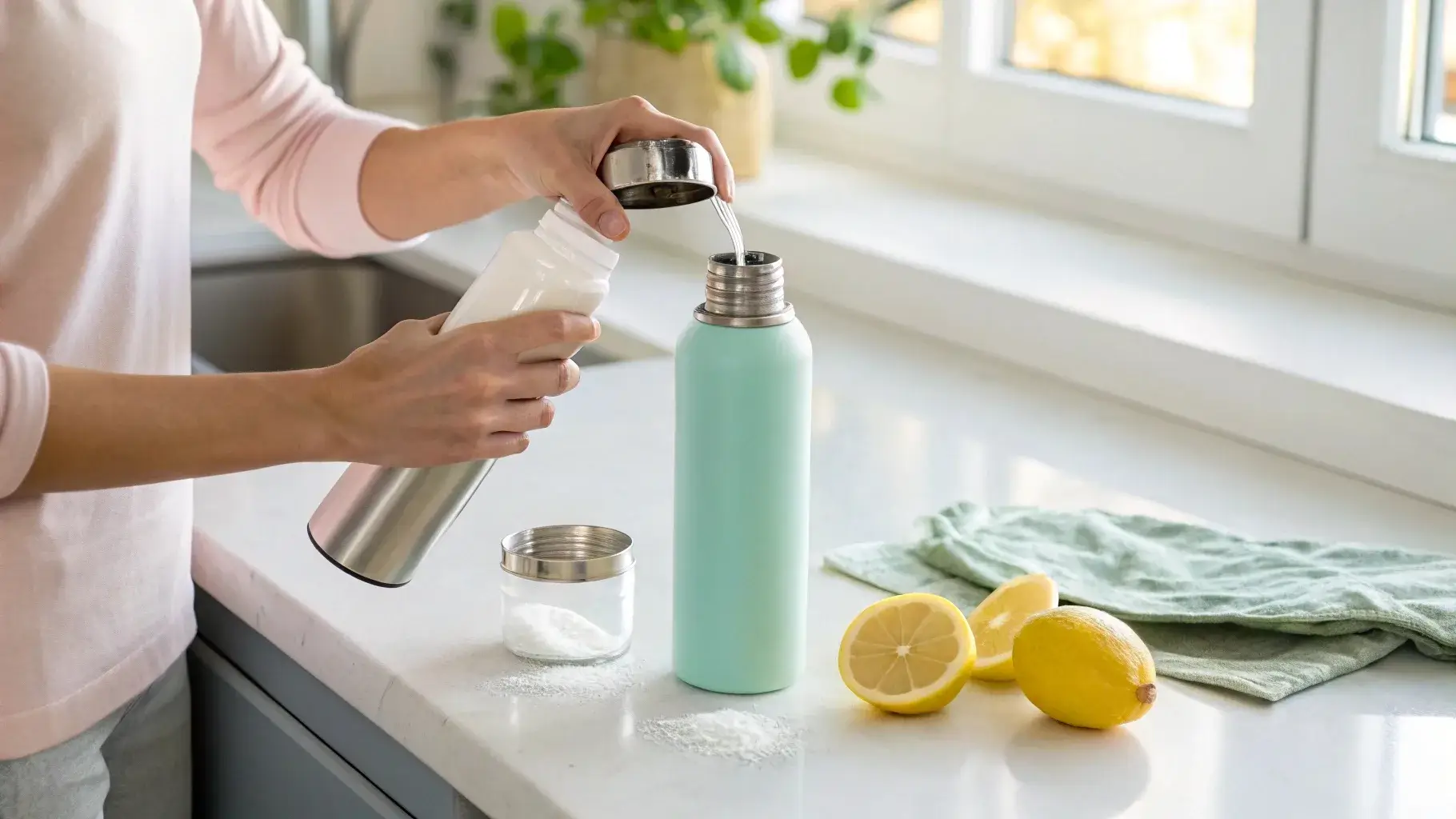
Methods to Remove Metallic Smell
-
Baking Soda and Water1: Fill your stainless steel bottle with warm water and add 1-2 tablespoons of baking soda. Let it sit for several hours or overnight. The baking soda helps neutralize odors and remove any build-up of contaminants.
-
Vinegar and Water2: Mix one part vinegar with four parts water, fill the bottle, and let it sit for an hour. Vinegar has natural deodorizing properties that can help get rid of the metallic scent.
-
Lemon and Baking Soda3: Combine lemon juice and baking soda in your bottle. The acidity of lemon and the abrasiveness of baking soda work together to remove odors. After cleaning, rinse thoroughly to ensure no lemon or baking soda residue remains.
-
Salt and Water: Fill the bottle with warm water and add a few tablespoons of salt. Shake the bottle vigorously. Salt can scrub away any build-up inside the bottle and neutralize unwanted smells.
Extra Tips for Keeping Your Bottle Smell-Free
- Wash After Every Use: The more frequently you clean your bottle, the less likely it will accumulate a metallic smell.
- Dry Thoroughly: After washing, always dry your bottle completely, especially around the cap and lid areas, to prevent moisture from promoting odor build-up
How Do You Get the Metallic Taste Out of a Stainless Steel Water Bottle?
The metallic taste4 in your bottle can result from various factors, including water temperature, prolonged storage, or residues left from manufacturing. The taste is often more noticeable when you first start using the bottle or after washing it for the first time.
To eliminate the metallic taste, perform a thorough cleaning and make sure to rinse well after using any cleaning agents.
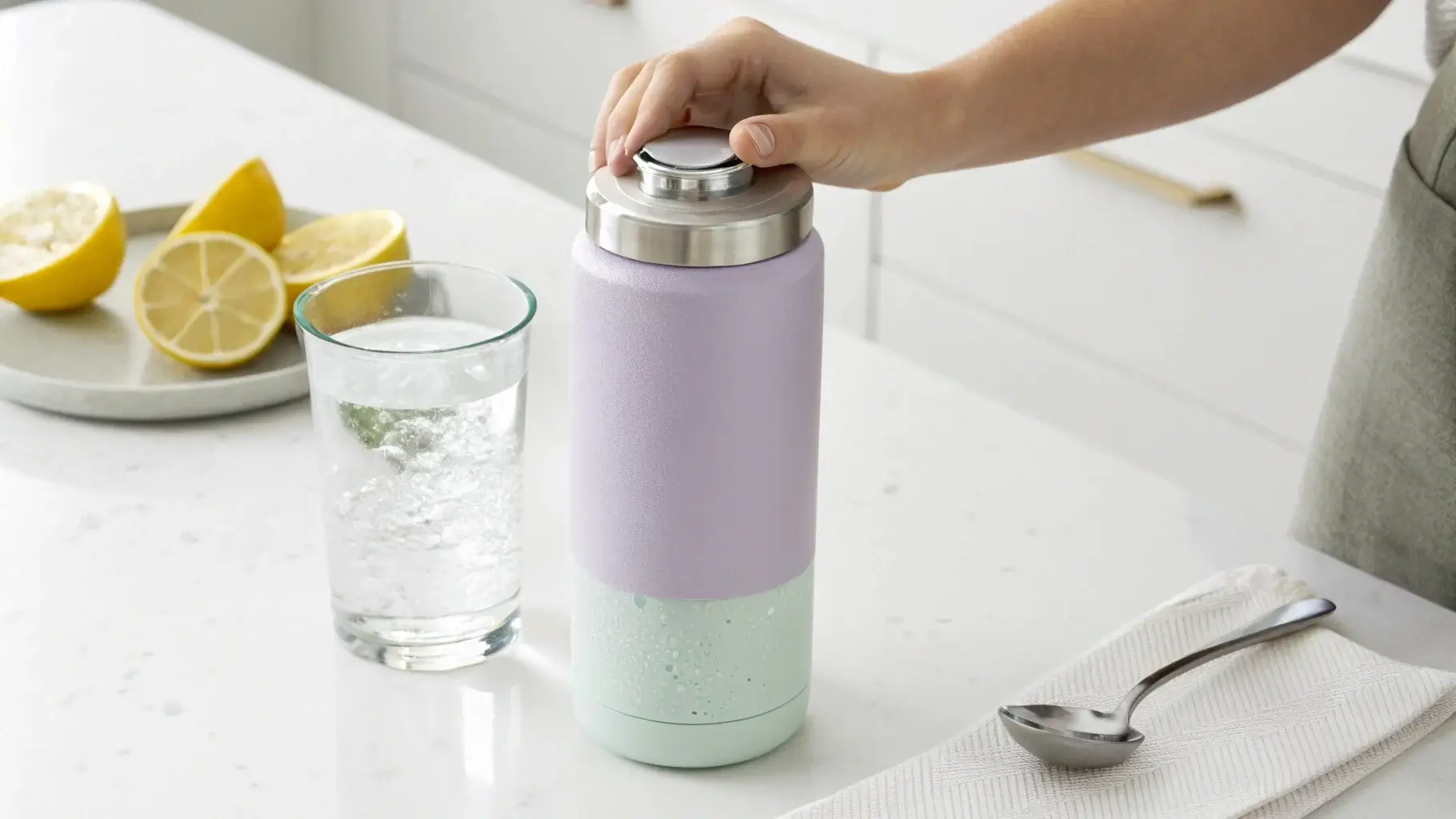
Steps to Remove the Metallic Taste
-
Use Baking Soda: As with the metallic smell, baking soda5 can also help remove the metallic taste. Mix 1-2 tablespoons of baking soda with warm water and let it sit for a few hours. After rinsing, taste the water again to see if the metallic flavor has gone.
-
Soak with Vinegar: Vinegar can break down the compounds causing the metallic taste. Use the same vinegar-water mixture mentioned earlier (1:4 ratio) and soak the bottle for an hour.
-
Clean Thoroughly with Soap: Sometimes, the metallic taste is simply caused by residue from the cleaning process itself. Make sure you’re thoroughly washing the inside of the bottle with soap and water to remove any lingering taste.
-
Activated Charcoal: Activated charcoal can absorb unwanted tastes and odors. Place a piece of activated charcoal6 in the bottle for 24 hours to help neutralize the metallic taste.
Preventing Future Metallic Taste
- Use Filtered Water: Sometimes, hard or untreated tap water can interact with your bottle, causing a metallic flavor. Using filtered water may help prevent this.
- Keep It Clean: A clean bottle is key to avoiding lingering tastes, including metallic ones. Regular cleaning with natural agents can keep the bottle fresh.
Why Does My Stainless Steel Water Bottle Smell Like Metal?
A metallic smell in your bottle can be caused by various factors, but the most common is residue left behind from manufacturing or from the materials used in the bottle’s construction.
If your bottle smells like metal, it’s likely due to the production process or from the buildup of minerals or contaminants inside the bottle.
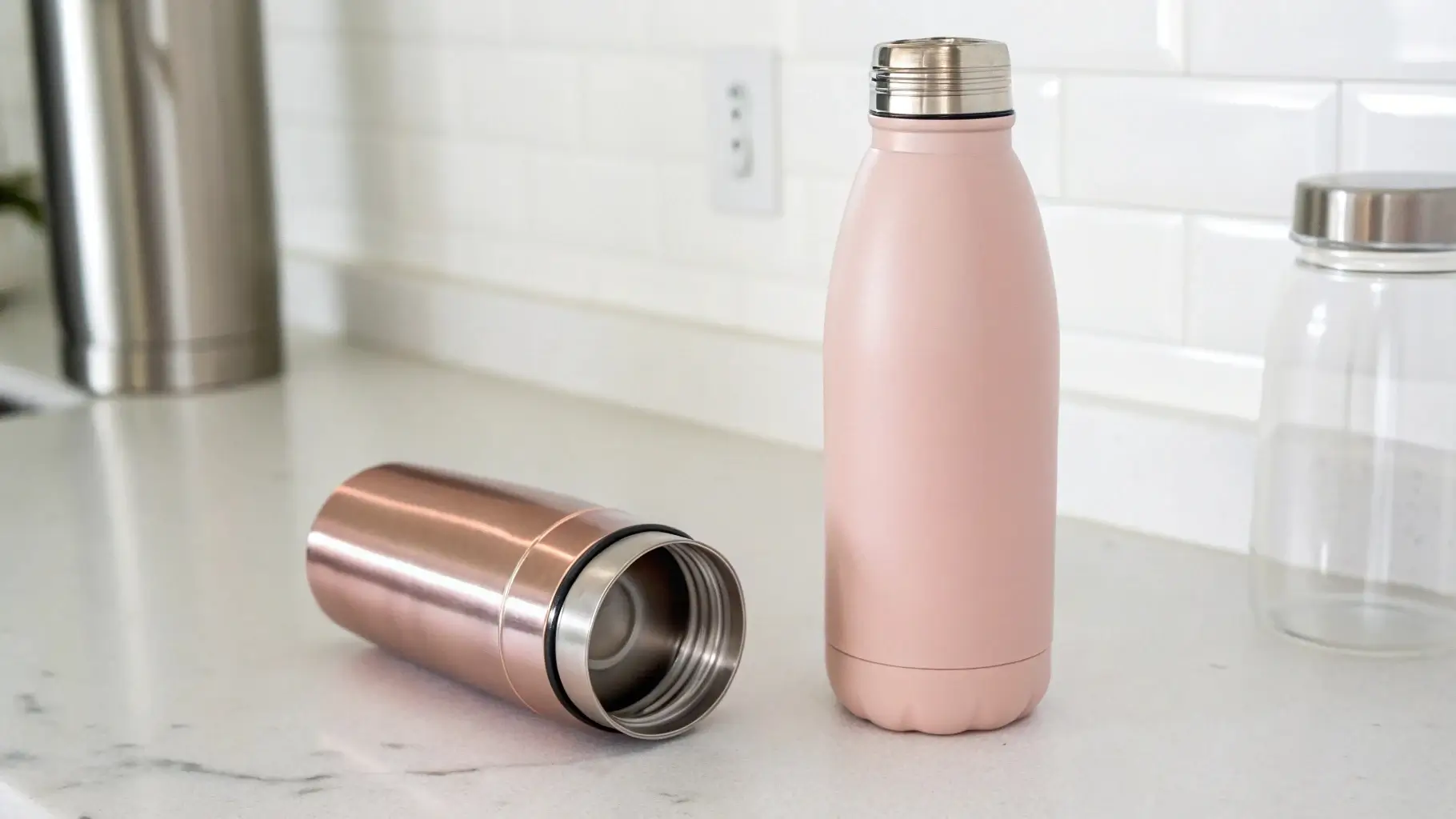
Causes of Metallic Smell
-
Manufacturing Residue7: Many stainless steel bottles have a thin protective coating or residue from the manufacturing process. This can leave behind a metallic smell or taste, especially when the bottle is new.
-
Mineral Deposits8: If you’re using hard water, minerals like calcium can accumulate in the bottle, which can contribute to the metallic smell.
-
Prolonged Storing of Water9: Storing water in your stainless steel bottle for long periods can also cause an unpleasant smell. This is especially true if you haven’t been regularly cleaning the bottle or if the bottle has been left damp.
Solutions for Metallic Smell
- Clean with Baking Soda and Water: A thorough cleaning using baking soda or vinegar will remove any manufacturing residue.
- Store Properly: Always empty your bottle after use and store it with the cap off to allow air circulation.
How to Get Smell Out of Metal Drink Bottle?
Removing the smell from a metal bottle is very similar to the process for stainless steel water bottles. Whether it’s a stainless steel bottle, a metal coffee mug, or a thermos, the same principles apply.
To remove the smell, you should clean the bottle with a combination of natural agents like baking soda, vinegar, or lemon juice.
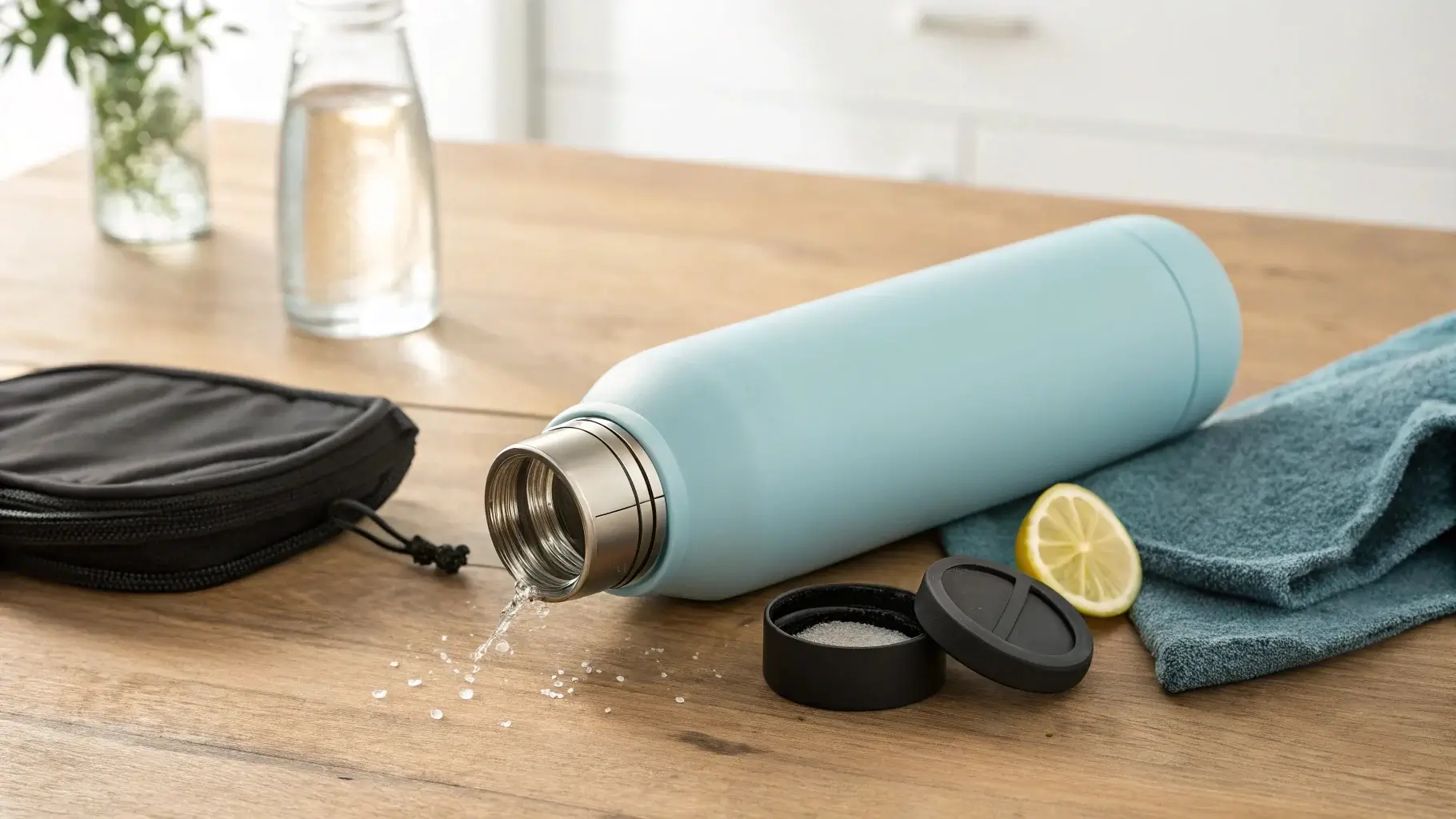
Cleaning Methods for Metal Drink Bottles
-
Baking Soda and Warm Water: This is a great option for removing smells from all kinds of metal bottles. Fill the bottle with warm water and add a tablespoon or two of baking soda. Let it sit for a few hours, then rinse thoroughly.
-
Vinegar Soak: A mixture of one part vinegar to four parts water works well to neutralize odors in metal bottles. Let it sit for an hour, then wash as usual.
-
Lemon and Salt: The acidity of lemon combined with salt’s abrasive texture works well to tackle smells and clean out any build-up inside the bottle.
How Do You Fix Metallic Smell?
If you’ve tried cleaning your bottle and the metallic smell persists, you can try a few additional methods. Over time, frequent use of certain drinks like coffee or tea in your bottle can also contribute to the smell.
Fixing the metallic smell often involves a few extra cleaning steps or using natural agents to neutralize the odor.
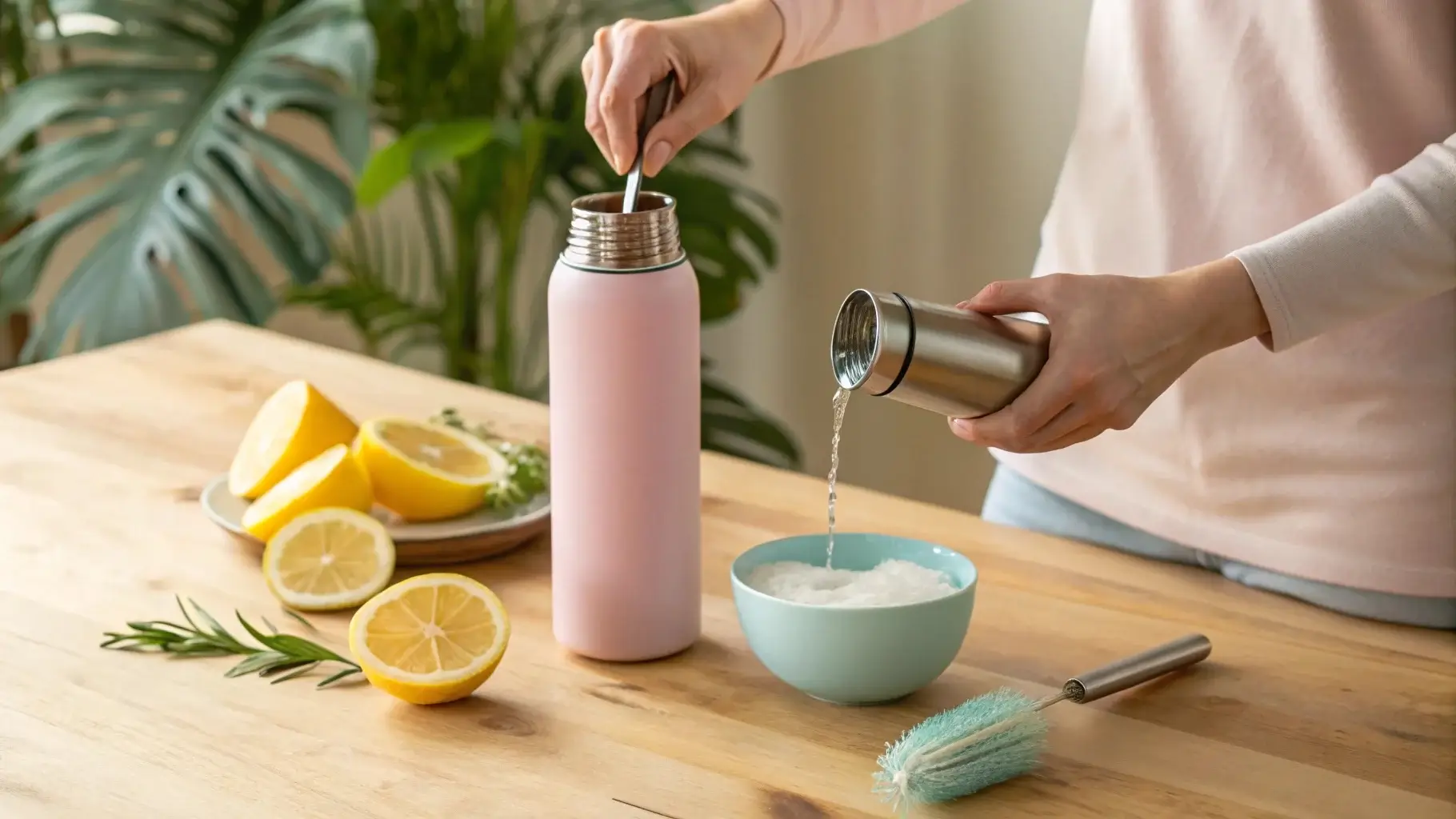
Additional Tips to Fix Metallic Smell
-
Soak in Hot Water and Soap: Sometimes, soaking the bottle in hot soapy water will help break down residues or contaminants that are causing the metallic smell.
-
Use Activated Charcoal: Activated charcoal is an excellent odor absorber. Place a small packet of activated charcoal inside your bottle for a day to help eliminate lingering metallic odors.
-
Frequent Rinsing: After using the bottle, always rinse it out thoroughly and dry it completely to prevent any smell from developing.
What Can You Not Put in a Stainless Steel Bottle?
Stainless steel bottles are versatile, but there are still a few things that should not be stored in them. Certain substances can cause damage to your bottle or negatively affect its smell.
Avoid storing liquids like citrus juices, hot liquids above 140°F, or carbonated drinks in your stainless steel bottle.
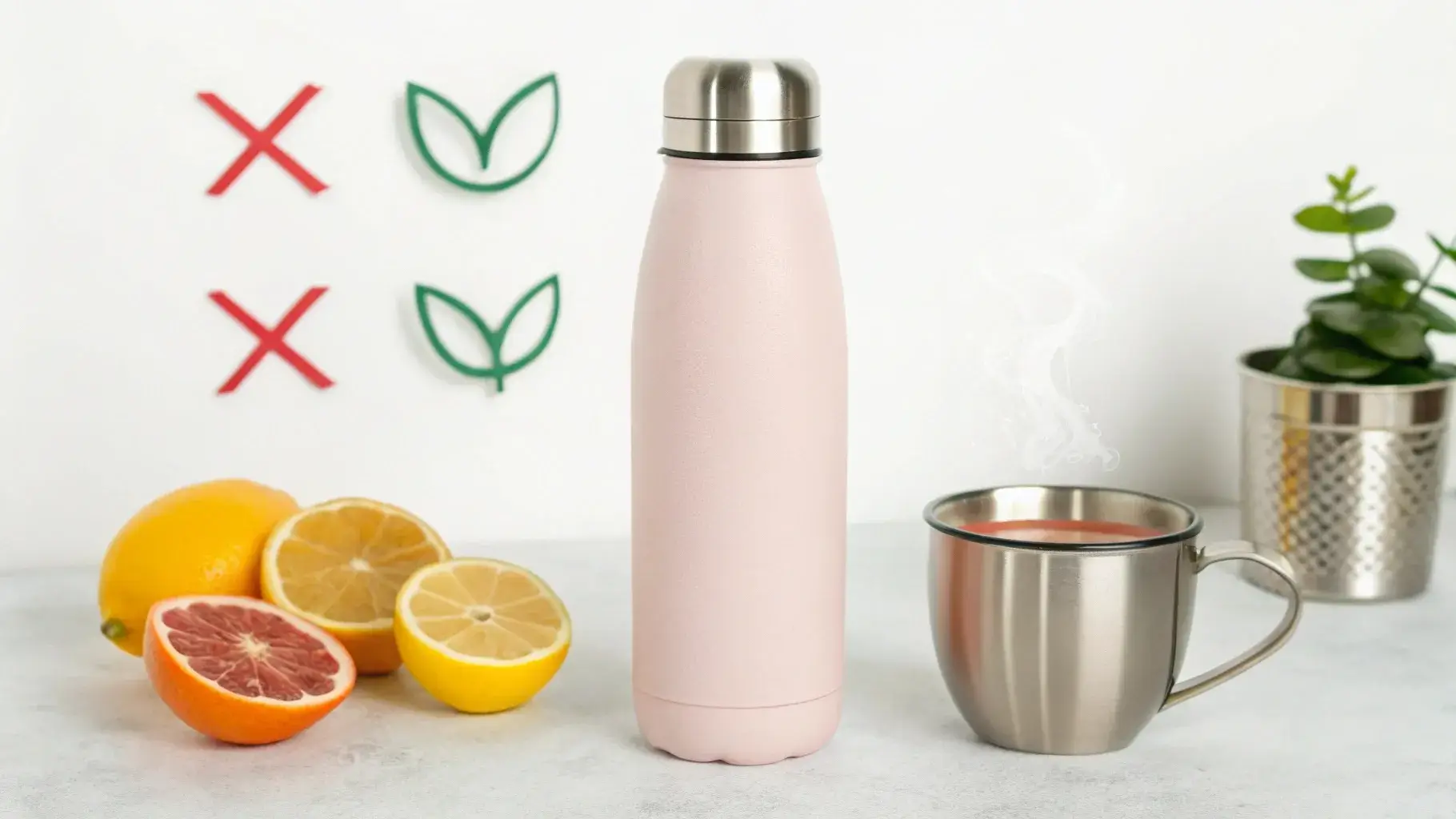
Substances to Avoid
-
Citrus Juices10: The acid in citrus juices like lemon or orange can break down the protective coating in stainless steel bottles, causing the bottle to rust or develop a metallic smell.
-
Hot Liquids11: Temperatures above 140°F (60°C) can damage the bottle’s structure over time, particularly if the bottle is not insulated.
-
Carbonated Drinks12: The carbonation can lead to pressure build-up inside the bottle, potentially damaging the seal or cap.
Safe Practices for Stainless Steel Bottles
- Use for Water and Non-Acidic Drinks: Water, tea, and non-acidic beverages are safe for your stainless steel bottle.
- Avoid Leaving Drinks for Long Periods: Especially sugary or acidic drinks, as they can leave residues that contribute to odors or mold growth.
Conclusion
If you’re experiencing a metallic smell or taste in your stainless steel bottle, don’t worry—it’s fixable. A combination of regular cleaning and using natural deodorizers like baking soda, vinegar, or lemon juice will ensure your bottle stays fresh and odor-free. By following these simple tips and avoiding substances that could damage your bottle, you’ll enjoy your stainless steel water bottle for years to come.
-
Explore this link to discover the effectiveness of baking soda in removing odors and cleaning stainless steel surfaces. ↩
-
Learn how vinegar's natural deodorizing properties can effectively combat metallic smells in stainless steel bottles. ↩
-
Find out how the combination of lemon and baking soda can enhance your cleaning routine and eliminate stubborn odors. ↩
-
Understanding the causes of metallic taste can help you prevent it in the future. Explore this link for more insights. ↩
-
Baking soda is a natural remedy for many issues, including metallic taste. Discover its effectiveness and methods here. ↩
-
Activated charcoal is known for its absorption properties. Learn how it can help eliminate unwanted tastes effectively. ↩
-
Understanding manufacturing residue can help you prevent metallic smells in your water bottle. Explore this link for detailed insights. ↩
-
Learn how mineral deposits can impact the smell and taste of your water, and find solutions to keep your bottle fresh. ↩
-
Discover the effects of storing water for too long in your bottle and how to maintain its freshness with proper care. ↩
-
Understanding the impact of citrus juices on stainless steel can help you maintain your bottle's integrity and avoid rust. ↩
-
Learn about the risks of storing hot liquids to ensure your bottle lasts longer and remains safe to use. ↩
-
Discover the potential issues with carbonated drinks to prevent damage to your bottle and ensure its longevity. ↩

